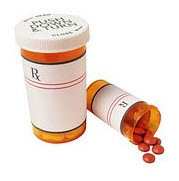 Let’s start with an obvious, irrefutable certainty: Prescribed medications that routinely remain in the vial or bottle won’t help anyone.
Let’s start with an obvious, irrefutable certainty: Prescribed medications that routinely remain in the vial or bottle won’t help anyone.
Millions of people fail to take their medications correctly, and it’s a serious problem. Worse, some quit taking their medications altogether, without giving any consideration to discussing this decision with their prescribers or other health care providers.
Consider these findings on medication non compliance from the nonprofit National Council on Patient Information and Education:
- Only 50 percent of patients with heart disease, asthma or hypertension follow prescribing directions.
- Adherence to prescribing guidelines is a problem for all age groups, and it’s not just an issue of poverty or poor education. Even the wealthy and most educated among us skip their medication.
- Consequences don’t necessarily enhance compliance. Only 58 percent of glaucoma patients already blind in one eye were protecting their other eye.
- Doctors mess up, too! One study indicated physicians adhered to their own prescriptions less than 80 percent of the time.
- Noncompliance can run an extra $2,000 a year per patient in additional doctor visits alone.
Some might say that the high cost of prescription drugs contributes to the problem, but medication non compliance goes far beyond prescription affordability. So what accounts for this non adherence? Here are a few culprits:
Hurried visits at the doctor’s office result in many patients leaving with new prescriptions without having asked a single question about the prescribed drug. Others, after purchasing their medications, ignore label directions and how much they are supposed to take. Anybody can forget a dose, of course. But many, after they begin feeling better, toss out the remainder of the prescription. Also, there is no doubt that the fear of side effects is a principal reason.
Another factor driving noncompliance is intimidation. Nowadays, there is as much information stapled to the prescription bag as one might find in the Physicians’ Desk Reference. This results in overkill – turning an ordinarily compliant patient into a noncompliant one out of fear or confusion about what they’ve just read – because the vast majority of these drug facts are for physicians anyway.
Additionally, some prescription drug bottles and vials are covered with so many brightly colored warning stickers they resemble a tiny Christmas tree. Then there’s the label, with wording open to interpretation and print so small, it requires a Sherlock Holmes Magnifying Glass to read. Yet another problematic issue is the number of people that attempt to take medications without the benefits of proper lighting.
If you suspect or know of medication non-adherence on the part of your clients, be a part of the solution by instructing them to do the following: (Conducting role play exercises may help clarify understanding).
- Before leaving the doctor’s office with a new prescription, ask detailed questions. For example: How and when do I take this drug? Are there any foods, beverages or other medications I should avoid while taking this drug? What is this drug supposed to do, and how can I tell if it is working? What side effects might I have, and what should I do about them? When do I discontinue this medication?
- At each doctor’s visit, bring a complete list of all prescription and non-prescription medications, including the names of any vitamins and supplements. This way the physician can screen for possible interactions.
- If reading or understanding the medication information insert poses a problem, ask a pharmacist for help. Pharmacists routinely simplify complex and confusing directions.
- If forgetfulness is an issue, consider compartmentalized pillboxes or even a high-tech “talking” model that sounds an alarm when a dose is missed.





Leave A Comment
You must be logged in to post a comment.